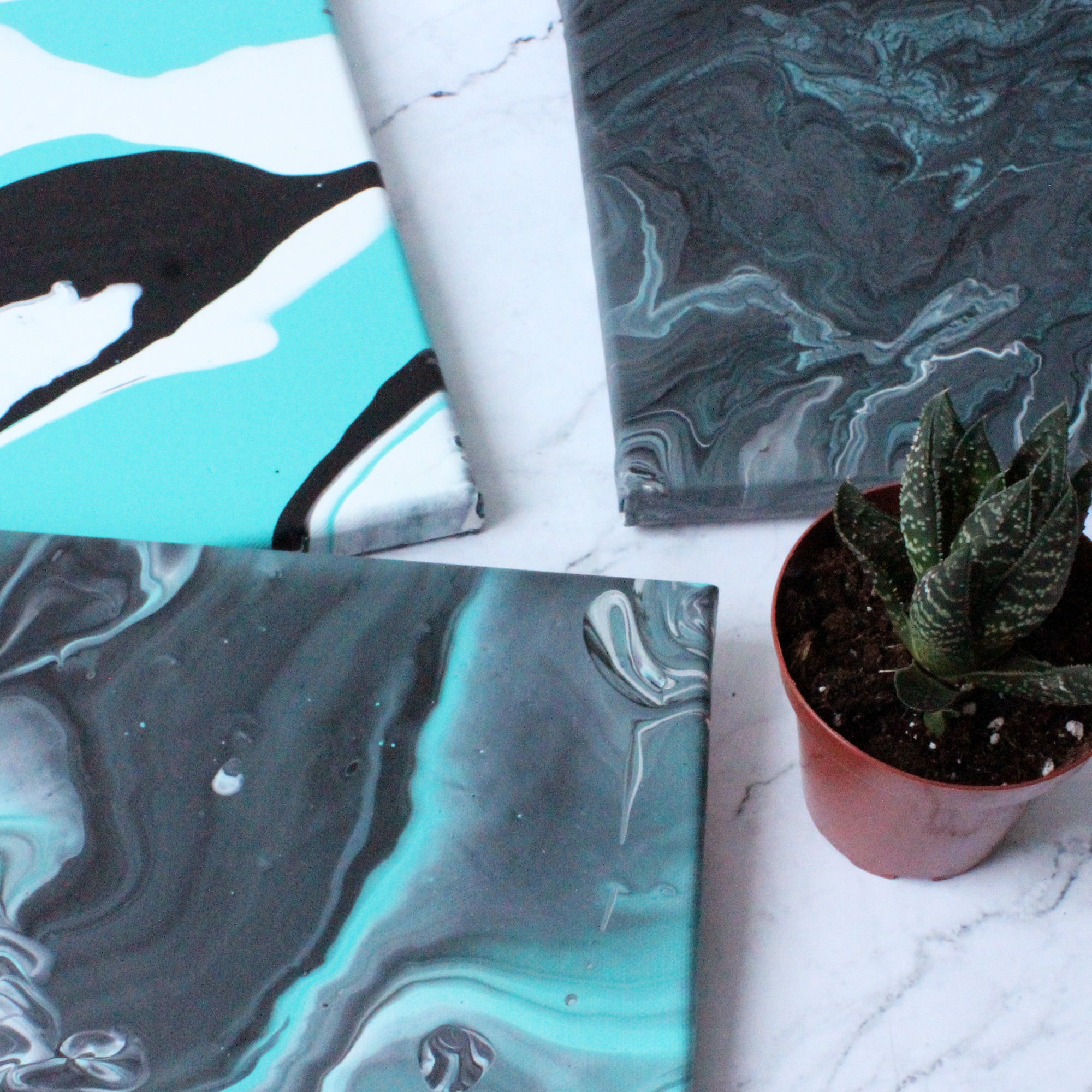Acrylic pour paintings are fluid and unpredictable artistic expressions that are very fun to create. Once you’ve made one, you’ll immediately want to try it again! Here are 3 methods for creating your own unique pour painting. As with all pour paintings, make sure your work area is level before you begin. For each of the methods mentioned below, the paint must first be prepared by diluting it with water and pouring medium until it has a viscous but fluid consistency.
MATERIALS:
- Stretched canvas
- Acrylic paints
- Pouring medium
- Plastic cups
- Plastic bags or drop cloth
- Level
- Water
- Stir sticks
INSTRUCTIONS:
How to create an acrylic pour painting: 3 techniques
Step 1: Straight pour technique
Going from the darkest colour to the lightest colour, pour some paint into the middle of your canvas and let it pool. Pour the next colour into the center and watch how the first colour moves outward. Continue pouring all your colours in this way. Pouring smaller quantities will result in smaller rings or cells of colour. Let your painting dry completely in a level, dust-free area.

Step 2: Flip cup technique
In separate plastic cups, prepare each paint colour by diluting it with water and pouring medium until it has a viscous but fluid consistency. Layer all your colours in a single cup and quickly flip it onto the canvas so that no paint spills out. Gently lift the cup and watch the paint pool and drip over the canvas. Let your painting dry completely in a level, dust-free area.

Step 3: Dirty pour technique
Layer all your colours in a single cup and gently drag a stir stick through the paint several times. The goal is to slightly combine the colours without mixing them into one solid hue. Pour the mixture over your canvas and let it settle and pool. Let your painting dry completely in a level, dust-free area.

TIPS
- A level work surface is essential to successful pour paintings.
- This process is messy. Be prepared, protect your work area and clothing before you get started.
- Add a silicone spray to your paint mix to achieve more defined cells in your painting.






